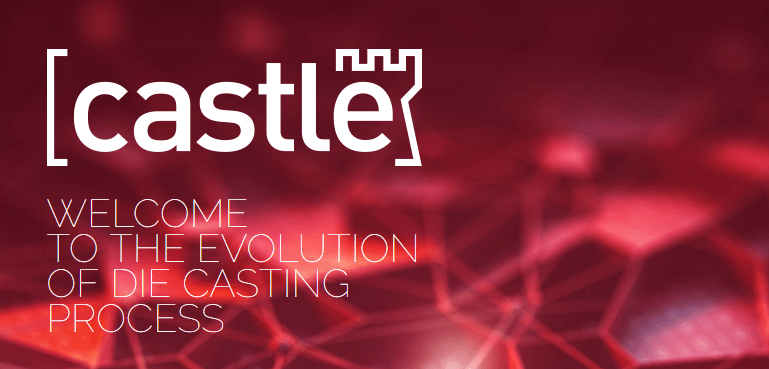Castle and its history: links to the territory
Castle is the die casting process simulation software created by PiQ2 and born in 2011. However, its history begins well before 2011. The project, in fact, has its roots in the metallurgical vocation of the Brescia area and in the collaboration of PiQ2 and its team members with the University of Brescia.
The city of Brescia is one of the main industrial centers of Europe and the development of the metallurgical sector in the territory has been possible thanks to a series of natural and historical causes. To mention just a few of them, let’s think of the presence of mineral deposits in the Prealps of Brescia, the state support given to local companies during the war periods and the entrepreneurship of the area during the economic boom. If you want to deepen the topic, you can read the article by Valerio Castronovo, published in 2019 in Sole24Ore and entitled “Brescia’s lesson for industry“.
Since Brescia has a strong business entreprise, it should therefore come as no surprise that Brescia represents an international excellence in the field of studies related to metallurgy and mechanics. Especially, this leadership is also due to the presence of the Technological Pole of the Multisectorial and Technological Service Center (CSMT) and the Pressocolata School which CSMT founded.
As mentioned above, PiQ2 is the result of this combination of these factors. The company, partner of the CSMT, collects the knowledge and expertise of the territory, and it offers a product that combines experience and continuous technological research.
The podèt rule: from practice to theory (and vice versa)
Considering that each Italian region has its own dialect, here in Brescia “podet” is how it’s called the billhook, the tool used to cut down minor tree branches and to clean undergrowth.
It is a thousand-year-old item, handed down and improved from generation to generation. It could therefore be considered as the symbol of the practice translated in rule. This is also the idea behind the work of PiQ2, the same ideology that presided over the development of its simulation software for die-casting: from practice to theory (and vice-versa).
Castle was indeed developed from the union between the empirical experience of companies and the technological research conducted within the laboratories of research centers: two worlds that are unfortunately often far apart.
In foundry usually experience and practice lead the parameters of the die casting process and the setting of the instruments. A know-how of great value and that is built over time, but where it still lacks a scientific method based on mathematical and thermodynamic studies and models.
Moreover, a separation between practice, theory and the data later analyzed often happens within the same company.
Actually, there is a large amount of manpower involved in the production process. This can often create a distance between the people involved in the design of the moulds and the casting process, and those who are more operationally involved in the production and moulding phase.
Often these different jobs have different training, skills and language: you could almost say that one deals entirely with software, the others with machines.
The missions of PiQ2 and its die casting simulation software are two. The first one is to bring the advanced technologies, obtained from research and laboratories, to the foundry business. The second one is to give to the software the functional know-how and all the amount of data accumulated over the years, in order to adapt its calculation and communication capabilities to reality and individual situations.
Castle: a specific simulation software for the die casting process
Importance of interface and language of the simulation software
As described above, the difference between the stage of planning and the stage of production has some obvious consequences for the modalities and the possibilities of use of simulation software for the die casting process.
Indeed, most of the products on the market are not specific to a single production technology, but are generally aimed at different technologies that share some common process features. However, the different melting processes, besides obvious differences in technology and production, have their own vocabulary and their own set of reference data.
This is why simulation software generally addresses only to the “knowledges of designers”, who become the only people in the company who are able to read and process data.
The outbreak of bottlenecks is the consequence of this process. A small number of people can use the software, while the data that the program transmits to the design are not, or do not appear to be, the same data that is analyzed in the foundry. After all, the comparison between empirical and theoretical data is difficult.
Castel instead was created with the aim to solve this problem from its root cause: it is a simulation software specific for the die casting process. it is pre-set with the parameters of the technology and ready to be used and understood by the production.
As previously said, Castle is a software that is created and developed from practice to theory (and vice versa), that mixes skills and experience.
Therefore, Castle is used at different levels and by different professional roles thanks to the immediacy of terminology, to the ease of use and to the simplicity of the graphic interfaces.
Castle allows a transversal collaboration between different areas, and it gives the possibility to collaborate and analyze data from different perspectives, which come from different skills and training.
Precisely Castle’s modular structure guarantees its use by different roles involved in the production process. Castle’s modules will be discussed in more detail in the article Die casting tools: how to optimize tools and processes, but so far it can be said that they make it a tool that can provide a useful aid both during the design of the mould and the casting flow and throughout the production process.
The importance of specificity for die casting production technology
Technology is a very complex world, as all experts know. Therefore, it is always suggested to use specific tools, as it was necessary to use the billhook to cut the undergrowth.
Verticality and specialization on a single production process are important not only for the purposes of vocabulary and knowledge sharing between the different departments of a company.
The specificity of the simulation software, as said in the previous paragraph, allows to:
- Work with a set of preset parameters that reduce the margin of error
- Increase the reliability of simulations
- Make it easy to use, unlike other products
These pre-set parameters also enable the reduction of time that human resources must spend on the simulation setting, speeding up the whole process from the beginning.
Another basic consequence of Castle’s specialization on a single production technology is the ability to make specific calculations and predictions of die casting and therefore to calculate aspects that other software are not able to simulate. Thanks to Castle’s specialization it is therefore possible to simulate various aspects of the die casting process in a way more specific and responsive to the reality of production than that of other simulation software. In fact, other simulation software, to achieve similar results, when the functionality is available, require a pre-setting phase that is onerous both in terms of time and resources deployment.
Conclusions
This post is aimed at giving a short overview on the history of Castle and PiQ2, on the relationship with the territory where they were born and on the ideology that drove to the realization of a specific simulation software for the die casting process.
The next articles will deepen topics that have only been mentioned here, or not even dealt with, such as the modularity of Castle. In the meantime, for more details, check out PiQ2 website.
If you want to see the software on the move, we suggest you to subscribe to the PiQ2 YouTube Channel where you can find some video tutorials illustrating some aspects of how the product works.
Contact us for more information, visit our website at the Contact page

